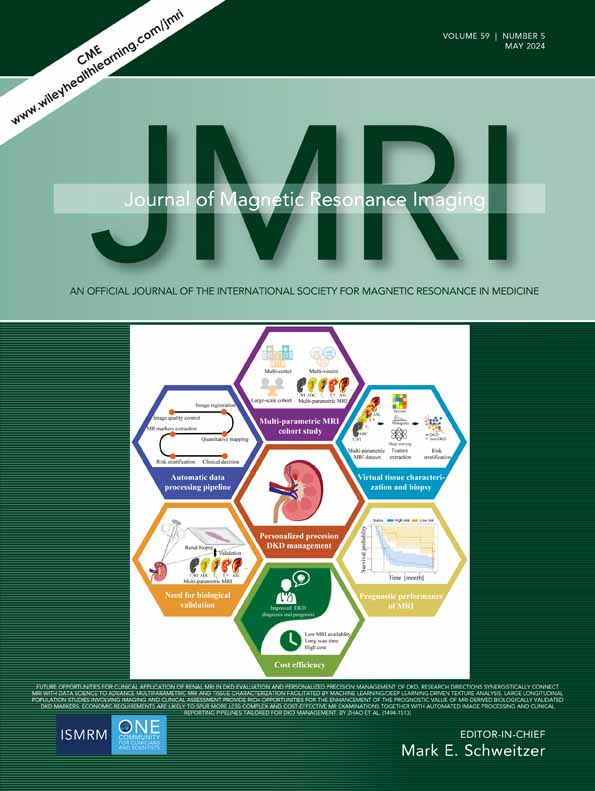MRI Radiomics Features of Adenohypophysis Determine the Activation of Hypothalamic-Pituitary-Gonadal Axis in Peri-Puberty Children
Dong Liu and Wenzhi Lv contributed equally to this work.
Abstract
Background
The status of the hypothalamic-pituitary-gonadal (HPG) axis is important for assessing the onset of physiological or pathological puberty. The reference standard gonadotropin-releasing hormone (GnRH) stimulation test requires hospital admission and repeated blood samples. A simple noninvasive method would be beneficial.
Objectives
To explore a noninvasive method for evaluating HPG axis activation in children using an MRI radiomics model.
Study Type
Retrospective.
Population
Two hundred thirty-nine children (83 male; 3.6–14.6 years) with hypophysial MRI and GnRH stimulation tests, randomly divided a training set (168 children) and a test set (71 children).
Field Strength/Sequence
3.0 T, 3D isotropic fast spin echo (CUBE) T1-weighted imaging (T1WI) sequences.
Assessment
Radiomics features were extracted from sagittal 3D CUBE T1WI, and imaging signatures were generated using the least absolute shrinkage and selection operator (LASSO) with 10-fold cross-validation. Diagnostic performance for differential diagnosis of HPG status was compared between a radiomics model and MRI features (adenohypophyseal height [aPH] and volume [aPV]).
Statistical Tests
Receiver operating characteristic (ROC) and decision curve analysis (DCA). A P value <0.05 was considered statistically significant.
Results
Eight hundred fifty-one radiomics features were extracted and reduced to 10 by the LASSO method in the training cohort. The radiomics model based on CUBE T1WI showed good performance in assessment of HPG axis activation with an area under the ROC curve (AUC) of 0.81 (95% CI: 0.71, 0.91) in the test set. The AUC of the radiomics model was significantly higher than that of aPH (0.81 vs. 0.65) but there was no significant difference compared to aPV (0.81 vs. 0.78, P = 0.58). In DCA analysis, the radiomics signature showed higher net benefit over the aPV and aPH models.
Data Conclusions
The MRI radiomics model has potential to assess HPG axis activation status noninvasively, potentially providing valuable information in the diagnosis of patients with pathological puberty onset.
Evidence Level
4
Technical Efficacy
Stage 2




